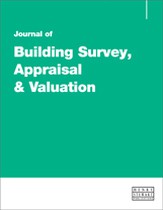The Access to Neighbouring Land Act 1992: A useful tool or a blunt one?
Abstract
This paper explains what the Access to Neighbouring Land Act 1992 does and how it fits into the legal landscape of issues for developers and property owners to be mindful over. It draws from case law learning and from the practical experience of the writer in dealing with site access, crane oversailing licences and Part 8 claims. Its aim is to give prospective parties to access licences and those advising them a full insight into the issues that arise, a warning as to the costs of litigation and the confidence to start negotiating within sensible limits.
The full article is available to subscribers to the journal.
Author's Biography
James Brenan is a property disputes resolution Solicitor with Spencer West LLP, who carries out some advocacy and advises and drafts across the repertoire of land law and related torts and contract/trusts topics including: boundaries, collective management scheme design and enforcement (covering leases, commonhold as a concept, and estate rent charges for freehold estates), easements, positive and restrictive covenants, enfranchisement, options, the right to manage (RTM) or the possibility to have a manager appointed by a tribunal, acquisition orders, court- and tribunal-based powers to vary documents, possession claims, break notices, nuisance from various causes such as excessive light and noise, escapes of water, party walls, dilapidations, flying freeholds, building defects and harassment. In his non-contentious work, James acts in sales or purchases of more complicated titles and in scrutinising land holdings of target companies in take-over situations. James is an optimist — believing that talking/writing in detail about difficult situations helps all sides to reach compromises such as boundary, access and behaviour agreements; and a pessimist — believing that collective management schemes may fare no better under an apex owner controlled by all the unit owners but with no assets of any value and no income other than service charges (as the Law Commission and successive governments seem to want) compared to them having an investor motivated by profit as their apex owner, who is legally accountable to unit owners and so carries some risk; but most of all is a pragmatist — for example, he knows how to use the Party Wall Act and the common law of nuisance to resolve flying freehold neighbour disagreements.
Citation
Brenan, James (2024, June 1). The Access to Neighbouring Land Act 1992: A useful tool or a blunt one?. In the Journal of Building Survey, Appraisal & Valuation, Volume 13, Issue 1. https://doi.org/10.69554/ZUSN4645.Publications LLP
